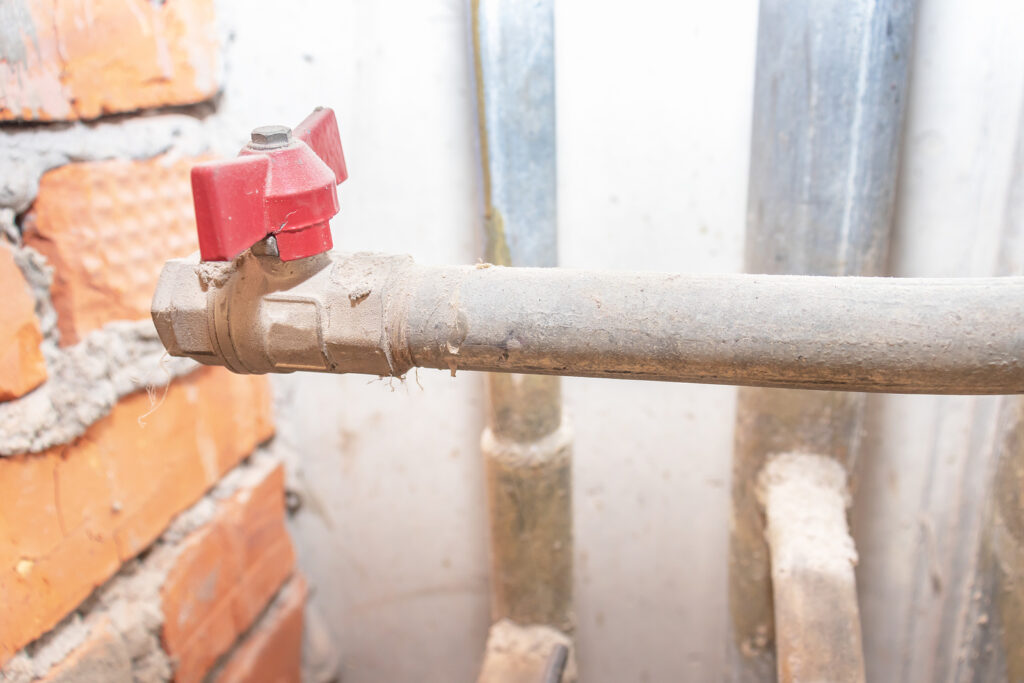LEAD IN WATER: DETECTING AND REMOVING LEAD FROM LEAD PIPES

Lead poisoning results from the ingestion of the metal, most commonly from water pipes. The health risks of lead poisoning include anaemia, seizures and possibly a coma or in severe cases, death. Lead in water pipes contaminates tap water and is a primary cause of lead poisoning. It is not easily detectable and takes place over time.
Modern lead pipe removal techniques make use of a technology called ‘moling’, to extract the dangerous old pipes and replace them with safe modern alternatives. Moling methods avoid trench digging by using a pneumatic tool to burrow underground along the path of a pipe, extract it and replace – this tool is called the ‘mole’.
Lead poisoning is particularly dangerous for children, so it is essential to be aware of the indications that your pipes are dangerous, the signs of lead poisoning and how to safely remove them. As pioneers in lead pipe removal and replacement using moling methods, we are well-placed to explain.
Contact us today for a free quote on removing and replacing lead pipes.
HOW DO I KNOW IF THERE ARE LEAD PIPES IN MY HOME?
In the UK the key thing to determine is the date of construction in your home. If your home was built before 1970, you should check your pipes.
Due to the health risks of lead in water pipes, lead was banned in the UK after this date – so if your home was built after this date it is unlikely to have an issue. However, there are other sources of lead in water aside from pipes
To determine if your home has lead pipes you should do the following:
- Check pipes coming into the property: Your water pipes are typically in a kitchen cupboard, under stairways or in other utility areas. Lead pipes are dark grey, try scraping them with a screwdriver if they are painted.
- Check pipes coming out of the property: The stop valve outside your home is another place to check, again scrape the pipe. If it is brown it is probably copper, if it is bright silver try to attach a magnet – which will indicate steel.
- Check your taps and fittings: Lead fittings can potentially contaminate tap water. If you have old taps in your house then there is a chance they are lead, check these in the same way as your pipes.
- Test your water: If in doubt, your public water provider may be able to test the quality of the tap water in your house and detect lead or any other metals. To get a test you will need to contact your local water company.
Most public water companies are aware of the risks of contaminated water and treat their supplies to be corrosion resistant, to mitigate any risk from sources of lead. However, it does not remove the risk from lead pipes entirely and a lead kitchen tap will also still carry a level of danger.
It is not just drinking water that is a health problem, showers and baths with lead pipes can also cause problems with the skin if a person is bathing in them over long periods.
If you have any of the signs of lead pipes in your home then you have a responsibility to take action to avoid health risks.
REMOVE AND REPLACE YOUR LEAD PIPES
Once you find out you have lead pipes in your home, or there’s a risk you have lead in your water supply you must remove and replace all the necessary pipes. This is relatively simple for plumbers to do with internal pipes, but outside this problem is a bit more complex.
The best method of outside lead pipe replacement and removal is moling. Moling is a trenchless technique, but it requires expert skills and cutting edge equipment to do achieve this in a non-disruptive way. Moling is also a significantly faster process than digging a trench, so it is a much more cost-effective option.
See below for a video demonstration of how the moling process works:
RISKS AND SOLUTIONS FOR LEAD IN WATER PIPES
The health problems that lead can cause are potentially severe, so you have a duty to act promptly to replace your lead pipes. A water system containing lead limits your ability to sell your home too, so it is an economical choice.
Lead in water is a very concerning problem, but solutions are available to suit most budgets. We use innovative moling techniques to remove and replace lead pipes quickly, efficiency and at a low price. Contact us today for a free quote.
FAQS AND USEFUL INFORMATION
The following are some frequently asked questions about lead in water and the services we provide:
The health risks of lead in water for males and females include high blood pressure, lower fertility, renal problems and circulatory issues. The problems of lead poisoning from water pipes are worse in children and may result in seizures, coma or death in severe cases.
Symptoms of lead poisoning, from water or other sources, include tiredness, being sick, headache, skin discolouration, cognitive changes and abdominal cramping. If you suspect that you or anyone else has lead poisoning see a doctor as soon as possible.
Get in touch today for a free quote on our lead pipe replacement services.

